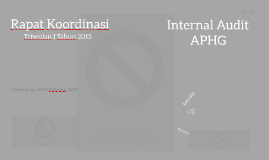BUSINESS STATISTICS
Transcript: b Y BUSINESS STATISTICS 2 X g m 1 p MODE FOR GROUPED AND UNGROUPED DATA F Mode INTRODUCTION One of the values of the measurements of central tendency is the mode. This value offers us an approximate indication of which elements in a data collection are most likely to occur. For instance, you may be aware that a college offers ten distinct courses to students. Now, the course with the most student registrations will be counted as the mode of our provided data. Overall, mode informs us what item in the data set has the highest frequency. There are a lot of real-life uses and importance of using the value of mode. There are a lot of aspects wherein just finding the average (or mean) will not work. For instance, refer to the example given above. In order to find the highest number of students enrolled in a course, finding any of the mean or median won't work. Hence, we tend to use the Mode in such cases. E MODE FORMULA In statistics, the mode formula is used to calculate the mode or modal value of a given set of data. It is defined as the value that is repeatedly occurring in a given set. That means, the value or number in a data set, which has a high frequency or appears more frequently is called mode or modal value. Mode is one of the three measures of central tendency, apart from mean and median.Mode for ungrouped data is found by selecting the most frequent item on the list. Now, for any given data range, let us consider 'L' is the lower limit of the modal class, 'h' is the size of the class interval, '(f) m' is the frequency of the modal class, '(f) 1' is the frequency of the class preceding the modal class, and '(f) 1' is the frequency of the class succeeding the modal class. Here, the modal class is the data interval with the highest frequency. Thus, the mode can be calculated by the formula: Mode formula for ungrouped and grouped data Ungrouped Data To find the mode for ungrouped data, it just requires the data values to be arranged either in ascending or descending order, then finding the repeated values and their frequency. The observation with the highest frequency is the modal value for the given data is here referred to as the modal value. Grouped Data Mode formula for grouped data is given as, where, .L is the lower limit of the modal class. .h is the size of the class interval. .fm is the frequency of the modal class. .f1 is the frequency of the class preceding the modal class. .f2 is the frequency of the class succeeding the modal class. Life is an Open Book.. D Ready to Turn the Next Page? C Derivation of Mode Formula For the grouped data represented on the histogram, there are not individual values, to check for modal value. Thus, we take up the modal class of size h, and then find out the mode based on that. Consider the graph given below. Let the frequency of the modal class be fm or f1. Here, BC = h. The frequency of the preceding modal class be f0 and the frequency of the class succeeding the modal class be f2, the lower limit of the modal class be I0. Thus, the mode is given by I0+x. Deduction of mode formula B How to find mode for ungrouped and grouped data ? The value that appears the most frequently in a piece of data is known as mode. The mechanism for finding the mode may now be altered depending on the data provided (grouped or ungrouped). A grouped data set is data that is shown in intervals, as the name implies. Graphs are frequently used to display such information. Ungrouped data, on the other hand, is information that may be shown in a tabular format. As a result, we divide our data into two categories: grouped and ungrouped. Let's have a look at the methods for finding mode for both ungrouped and grouped data. Mode for Ungrouped Data Data that does not appear in groups are called ungrouped data. Let us take an example to understand how to find the mode of ungrouped data. Let us say a garment company manufactured winter coats with the sizes as mentioned in the frequency distribution table: We can clearly see that size 42 has the greatest frequency. Hence, the mode for the size of the winter coats is 42. However, the same does not hold good for grouped data. Mode for Grouped Data To find the mode for grouped data, follow the steps shown below. Step 1: Find the class interval with the maximum frequency. This is also called modal class. Step 2: Find the size of the class. This is calculated by subtracting the upper limit from the lower limit. Step 3: Calculate the mode using the mode formula. Let us understand this with an example. Below given is the data representing the scores of the students in a particular exam. Let us try to find the mode for this: Thank you! A

















